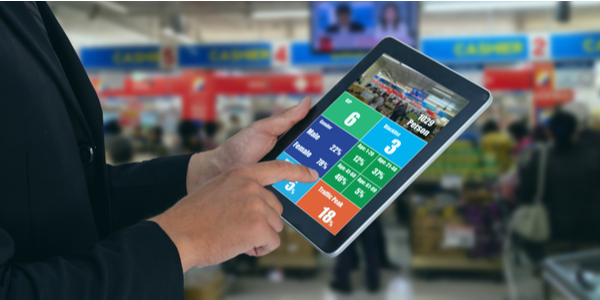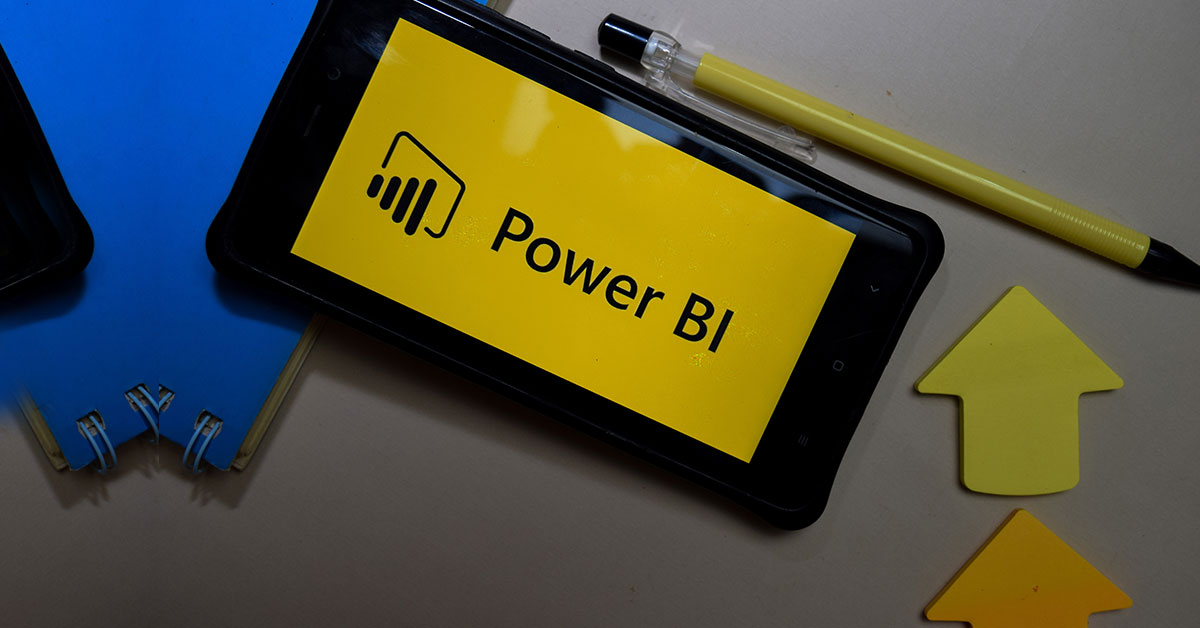Retail has been one of the most dynamic industries with frequently changing trends and rapidly growing customer expectations. The industry has rarely, if ever, been reluctant to embrace new technologies and innovations in improving its workflows and processes to serve the end-users. Industry experts suggest that in the year 2022, one could witness the sector embracing Business Intelligence, AI, ML, and the like radically, changing the face of retail like never before.
Data is the primary driving force of retail and determines businesses’ success (or failure) like no other factor. The tools and techniques for harnessing the ocean of data to predict the future, understand the user, improve the processes, and lead the competition are gaining unprecedented popularity. Power BI sits right there at the top of all the tools and solutions that help organizations streamline their processes and gear up for the upcoming demands. It’s a business intelligence and data analytics tool that allows businesses to draw sense from the seemingly daunting random streams of raw data and assists in making better decisions. Analyzing and Visualizing Data with Power BI will have a significant bearing on the retail industry dynamics next year as decision-making will evolve to embrace online shopping far more than physical retail shops.
Power BI gathers, organizes, and structures all kinds of relevant business data, sorts, refines, filters, and analyses it, and presents it in easily understandable forms such as charts and graphs to enable businesses to become more customer-centric. Built and promoted by tech giant Microsoft, it integrates seamlessly with other Microsoft enterprise tools like the Office suite and Dynamics 365 suite to provide end-to-end solutions to businesses. Its key functions are reporting, data mining, online analytical processing, analytics, business performance management, process mining, benchmarking, text-mining, and predictive analytics. Here are the top trends of Power BI that would help the retail industry have a successful 2022.
Power BI Trends will have a Consequential Bearing on the Retail Sector in 2022
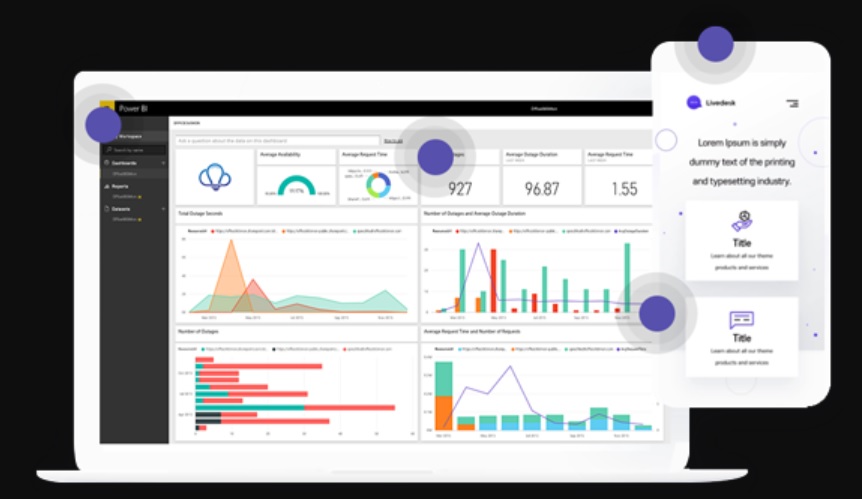
Intelligent Marketing with Power BI
Today, marketing is a data-driven activity. With the market getting progressively competitive, retail businesses put severe efforts and resources to target the end-user uniquely and more effectively. Smart promotions entail customized messaging tailored to the needs, budget, and preferences of the customer. The starting point of this intensive process is the gathering and structuring of appropriate data.
How Power BI marketing trends will help businesses to keep a finger on the market pulse
Social media platforms: Social media is easily one of the most potent platforms for marketing and facilitates unhindered real-time engagements and interactions with customers. A global trend of Power BI will be its extensive use by marketers to gather and capitalize on data from different social media platforms.
- Using Power BI, retail businesses would analyze social media campaign data to measure the impact of marketing efforts.
- Insights from user behavior and interactions help tailor social media campaigns by revealing patterns and trends.
- Combine structured and non-structured data from social media to get a true picture of the outcome.
Insights from web analytics – A Power BI trend to look out for next year will be its new features to help marketers with intelligent analysis of relevant information. It would gather the information from the website of the business and other resources on the internet.
- Behavioral analysis of website visitors over time to improve marketing ROI.
- A clear view of user demographics for knowledge about customer age, gender, income, etc.
- Reveling reports on market trends to figure out the weak links.
Predictive analytics – The trending AI capabilities of Power BI help retailers visualize the future using predictive analytics and other such big data tools. By keeping up with this Power BI trend in 2022, finding a pattern from huge chunks of data will be quick and easy.
With $156.5 billion revenue recorded in the pandemic year of 2020, one can expect the industry to grow to $300 billion in 2024, with a spectacular CAGR of 17.1% (IDC, 2020) in five years. The pandemic effects will temper this growth that could have been much higher.
AI adoption can certainly save retailers nearly US$340 billion on an annual basis with a streamlined supply chain. Additionally, AI adoption will enable natural language processing and sensor technology in the sector. It will also contribute to a C2M (customer to manufacturing) model, where organizations will leverage AI insights to customize products for individuals.
Expect a widespread use of analytic tools, algorithms, and image recognition throughout the sector to target users’ consumption habits, aided by robust regulations backed by user consent, of course.
- Market segmentation for better placement of ads.
- Elasticity characteristics for assistance in product pricing.
- Competitor analysis for market domination.
In-store data analysis – Power BI, as a top trending BI tool, is not limited to internet data and has multiple applications in real business setups like brick and mortar stores, shopping malls, hospitals, etc.
- Assistance in in-store product and ad placement by analyzing the buying patterns of customers.
- In-store marketing insights to boost the bottom line through cross-selling and upselling.
- Analysis of past behavior of target users to create the best message.
Power BI Trends and Features for Tighter Inventory Management
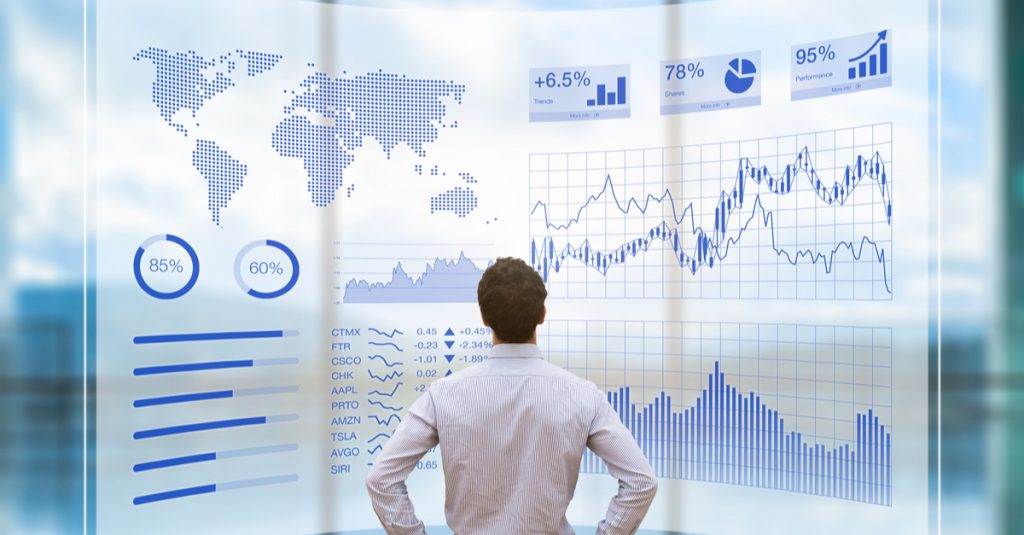
In 2022, businesses will be more conscious than ever about the importance of maintaining the proper inventory for optimum benefits. Understocking leads to a bad reputation and business loss, while overstocking implies the need for more cash and storage space. As a key technology trend, Power BI, by analyzing past data, would help businesses organize and assorted inventory with optimum stock allocation across stores.
Power BI 2022 trends in Retail Inventory Management
Detailed inventory reports: A Power BI 2020 trend reveals that by 2022, one can expect the nascent stage of real-time monitoring of inventory, a critical function for controlling and optimizing replenishment. Power BI can be customized to proactively generate alerts to spot potential out-of-stock situations and create accurate product profitability reports.
- Power BI reports revealing the cash tied up to the current stock.
- The monetary value of products and actionable insights for a better flow of cash.
- Individual inventory status of every warehouse and the value held from vendor/supplier.
Better vendor collaboration: Power BI, in the current year, will introduce even more features to eliminate all existing and potential problems that affect vendor collaboration and the supply chain. It uses enhanced data analytics to highlight process bottlenecks and monitor vendor/supplier management KPIs to streamline the supply chain.
- Interactive dashboards give access to product defect frequency, fill rates, backorders, on-time/late deliveries, lead time, etc.
- Drill down supply chain analytics for demand forecasting, fraud analytics, and damage and loss analysis.
- Itemized reports on vendor and supplier performance and data-backed recommendations to choose the right partner.
Targeted assortment: A rapidly developing trend of Power BI is that it’s increasingly used for targeted variety, which is a characteristic of modern retail management. Power BI marketing dashboard will enable retailers to create good mixes of merchandise in their warehouse and stores based on data-backed intelligence.
- Detailed analysis of business data to pinpoint sale patterns based on demographics for the right assortments.
- Informed decision-making through cost analysis against sale figures to achieve higher profits by expanding or narrowing down the assortments.
- Multi-step reporting to devise strategies for automation of assortment and maximize profits.
In 2022, Power BI Trends would Encourage Convenient e-commerce powered by AI and Data Analytics in the Retail Industry.
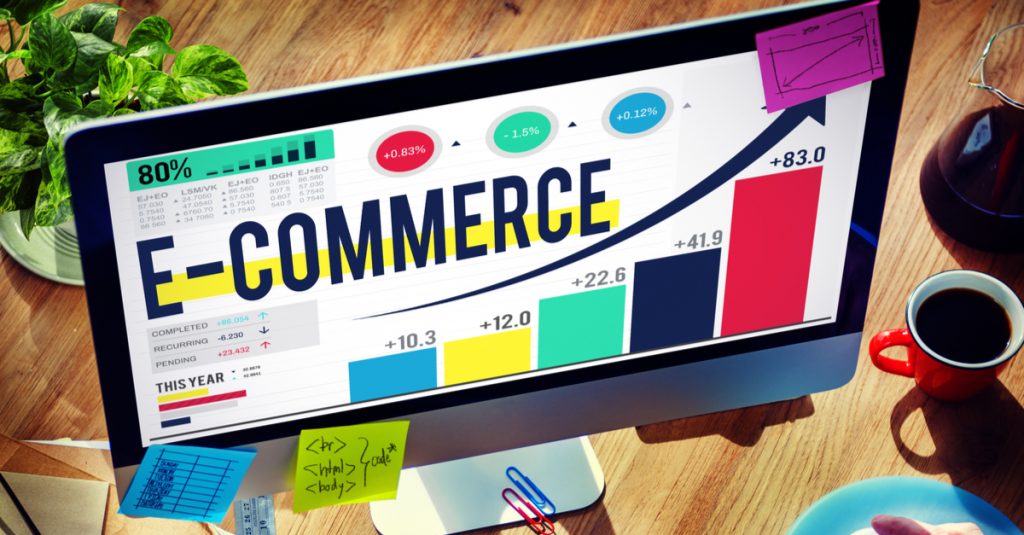
In 2022, business intelligence in the retail industry will be introduced through tools like Power BI that will soon start to play a mainstream role in catapulting online business experience to the next level.
Over 60% of marketing professionals in the US have been affected by the pandemic leading to shifting buying behaviors. These respondents are keen to stick to the new plan even after the pandemic (as revealed by Fortune, 2020).
People have evolved into shopping online for groceries, and McKinsey 2021 report reveals a 40% net increase in intent to shop online. Tesco’s and Sainsbury’s online grocery sales during Christmas have witnessed more than a hundred percent growth (as revealed by Econsultancy, 2021).
Because of the pandemic, many people have started relying on shopping online, so it makes sense for retail organizations to rely on assistive technology to push for innovation in the sector while targeting new users with renewed marketing strategies.
A noticeable trend of Power BI is that it is driving e-commerce players towards higher profitability
Organized business data – The sole driving force of business models like e-commerce is data. Daily data analysis to monitor market trends and competition and derive actionable insights from those that determine success in e-commerce.
- Tools for easy identification of target customers, top-selling products, current trends, and customer sentiment for better decision-making.
- Custom dashboards for easy and unified visualization of marketing campaigns, inventory, and sales reporting for quick actions.
- Statistical analysis and modeling for pricing and competitive intelligence.
Tracking e-commerce KPIs – ROI in sales, marketing, daily operations, and logistics can only be ascertained with precise monitoring of each area’s performance indicators. As per Power BI trends for 2022, expect Power BI to deliver customized visualizations of these KPIs based on a base measure evaluated against a target measure.
- Special features to track eCommerce-specific KPIs like cart abandonment, conversion rate, churn rate, purchase frequency, and more.
- Predictive modeling to help in discovering trends and getting the pricing correct to boost online retail.
- Customer behavior dissection for sequencing transactions is a step closer to the bigger picture.
Smart brand management – Businesses, particularly online retailers, are always conscious of their brand reputation in the market as it has a significant impact on their sales and profits. In 2022, BI tools such as Power BI will help by quick identification and access to relevant data and high analytics efficiency that offer revealing market insights.
- Collect user data from social platforms, news, and forums to detect positive and negative mentions and present them in a BI-ready data mart.
- End-to-end data processing and an interactive presentation for easy actions.
- Easy integration with Microsoft Dynamics 365 CRM for facilitating competitive intelligence from a centralized data warehouse.
Power BI Trends for Omnichannel Customer Experience
Multichannel retail will soon be a thing of the past and replaced by the more engaging omnichannel experience. The primary difference between these two is that in multichannel experience, each channel is siloed with little to no interaction with each other. On the other hand, omnichannel unifies the customer interactions in every medium (mobile app, website, brick & mortar) and treats it as a single-channel interaction for a delightful customer experience.
How Power BI trends for 2020 are pivotal in delivering an unmatched omnichannel environment
Unification of customer data:The new features of Power BI, with its feature-rich data visualization and analytical capabilities, help retailers predict user behavior by aggregating data from different online and offline sources. The unified view gives a comprehensive picture of market demands and expectations.
Next year, the rapidly maturing technologies of AR and VR could be leveraged to augment the online and physical shopping experience for a store to new levels. It could help businesses preview items for purchases, which is useful when buying furniture, clothing, accessories like sunglasses, etc. Several retailers have already incorporated the technology for simplifying the purchasing process.
- Gathering, sorting, and aggregation of data from customer surveys, loyalty programs, campaigns, CRM, and sales to give a unified picture.
- Information about customers visiting and revisiting different touchpoints in the entire customer journey.
- Assistance in targeted promotions and offers across different channels.
Accurate assortment & reassortment – One of the unique advantages of omnichannel retailing is that customers get what they want regardless of the channel they choose. Power BI trends for 2022 suggest that the tool will introduce features for more accurate demand forecasts and product assortment along with logistical assistance.
- Alerts to all stakeholders for depleting inventory—notifications to customers when their desired product is restocked.
- AI-assisted inspection of past data to ensure optimal stock of product assortment.
- Stock exhaust pattern scrutiny for accurate demand forecast and better product pitching.
Boosting the bottom line –Even in the omnichannel model, profitability can be maximized when the focus is on the right channel. An evergreen trend of Power BI is that it enables retailers to evaluate each step of the consumer journey that helps in identifying the best channel for investment.
- Tracking the cross-channel conversion rate to study the purchase steps and consumer habits.
- ‘Fact-based’ selling tools to reduce low-yield activities and deploy higher-yield promotions.
- Eliminates the time spent on data searches to reduce inefficiencies and save on operating costs.
Power BI Trends for Futuristic Brick and Mortar Stores in 2022
The popularity of the concept of cashier-less stores has reached newer heights, thanks to the pandemic as lockdowns forced buyers to choose the online portals for their purchases, even though they were cautious about the experience. As regular retail stores would use new technology to enhance efficiency, deliver better service, and find new ways to churn out higher profits, one can expect Big Data in retail to deliver relevant data and insights for enriching the buyer’s experience.
Cashierless stores:Cashierless stores like Amazon Go would witness impressive growth in the next few years. To shop, the customer needs to download a mobile app, connect it to the virtual wallet account of the store, scan the barcode at the store, pick their desired items and leave. They don’t have to stand in the billing queue as their virtual account would automatically get debited for the purchases.
- Since there is usually no human staff present at the store, Power BI can capture all consumer activities, evaluate sales and inventory metrics, and apply advanced analytics to reveal details of buyer behavior.
- Best tips for visual merchandising to display product features and benefits for higher sales and customer satisfaction.
- Impart in-depth customer knowledge to the customer service agents for quick issue resolutions.
Boost supply chain efficiency –The supply chain management of physical stores isn’t easy because of frequently updating inventory data and the urgency for restocking the shelves of fast-selling goods. With the latest Power BI trends, its real-time analysis and reporting will be of great help in this area.
- Real-time figures for storefronts to replenish inventory at the right time.
- Dashboards for supply chain management with KPIs and reporting tools that can be used with minimal training.
- Features for drilling down into shipment history for identifying delivery issues and events that impact on-time delivery.
Reduce operational expenses: Cutting down on operating costs and improving efficiencies are the top concerns of every retailer. A significant trend of Power BI in 2022 is its enhanced ability to convert raw data into useful information to let retailers achieve even higher operational efficiency.
- Thorough budget assessment to extend helpful insights that help recognize different areas for cost-cutting.
- Intelligent assistance for optimizing floor plans and product placement and figuring out slow-moving products and promotional assets.
- Big data and predictive analytics for accurate predictions to achieve the optimum balance between supply and demand for perishables.
Retail is a volatile industry, and the pandemic has necessitated the rapid adoption of technology, especially eCommerce channels. Know how the younger demographics interact with their brands and try to reinvent traditional modes of marketing. The “retail apocalypse” due to the pandemic has witnessed thousands of store closures in every region. Businesses that don’t adapt to changes will not survive eventually.
For retail businesses that aim to achieve their goals and sales targets next year in 2022, the smart harnessing of data isn’t an option but an absolute necessity. And this would be a cakewalk if they go with the top Power BI trends for the year. One of the most widely used BI tools, the cloud-based Power BI should be the logical option for such businesses owing to its rich analytics and reporting capabilities, personalized dashboards, and countless features.
Who we are, and what makes us a preferred Power BI provider?
Flatworld EDGE is a frontrunner in the IT solutions arena with extensive expertise in delivering effective Power BI services for the retail industry, with insightful dashboards. Our BI experts can derive the essence of data, ensuring faster and intuitive decision-making. Our data analytics capabilities prove a catalyst for business transformation, catering to custom requirements with prompt efficiency and acceleration in operations. Contact us for a no-commitment consultation about Power BI capabilities today!

